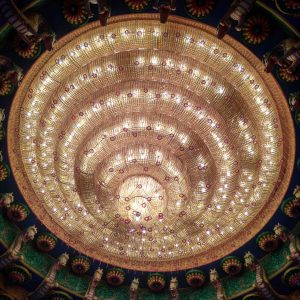Day 2 continued…
We took a lane from the main road and landed up in a posh area of Gariahat; along the street heading to our destination, on either side, there were plenty of stalls (many were food stalls) – but most were closed. We really didn’t know what to expect at our destination – the Ekdalia evergreen club. “What would be there in a club? Is it just all these stalls together in a single place along with a pandal like the one we saw in the Circus Maidan park?”
The road with stalls led us to a smaller lane which had banners on all sides – they had constructed archways with hoardings. And in this tunnel of hoardings, there were lots of people – plenty of pedestrians and even in this, somehow, cars found space to motor along!
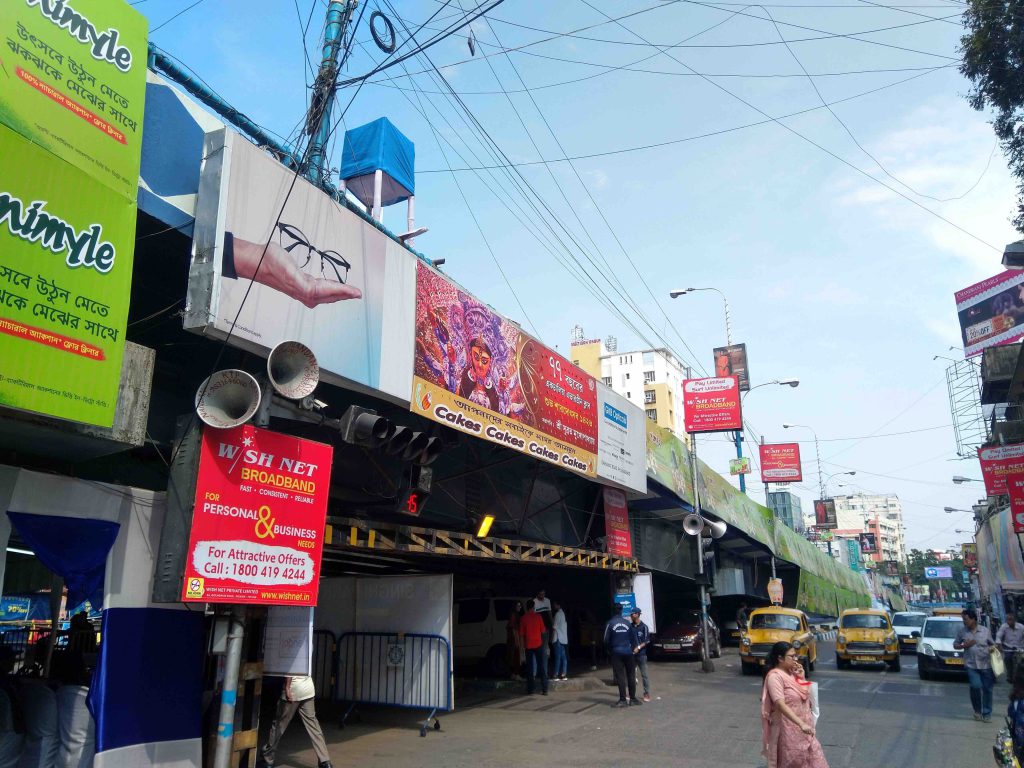
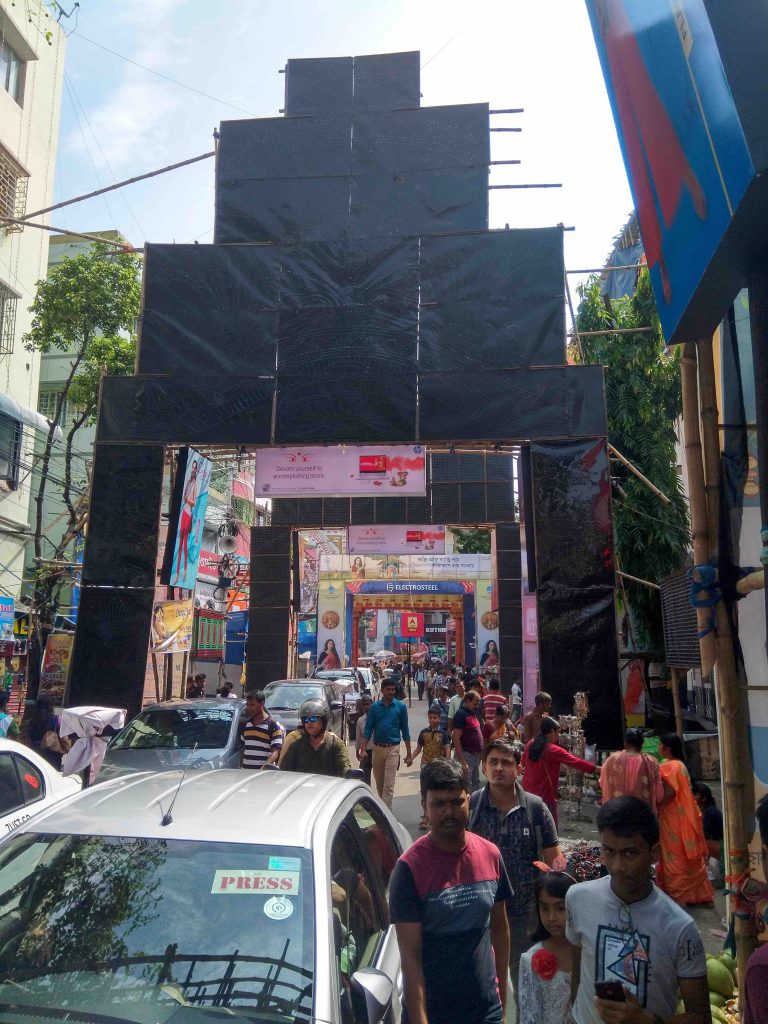
The lane led us to a large structure which resembled a temple but was a makeshift structure; it was very colourful and had plenty of intricate artwork – from the pillars to the dome, it looked grand.
We stepped inside the structure, and the first thing that caught our attention was the huge chandelier in the center that lit the place in an orange hue. It was grand, but what was grander were the 5 large sculptures on stage with goddess Durga in the center – all of them glittering in gold. In front of Durga was a lion engaged in battle with a demon that had a serpent around him.
There was a decent amount of crowd inside, but when you looked at the deity, you just forgot about the people around you. It was the same type of feeling that I used to have when seeing large Buddha statues in art museums or temples – a sort of meditative state of calmness – a quiet state of awe.
My initial skepticism about seeing pandals disappeared; I was now looking forward to seeing more of them!
I later leant that the Ekdalia club pandal was based on the Jatoli Shiv Temple in Himachal Pradesh – compare the photos of the actual temple vs the snap of the pandal, and you’ll realize how much attention to detail the artisans have paid.
(Click on the images below to view the full size)
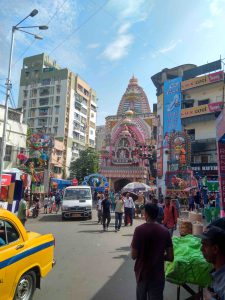
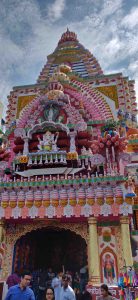
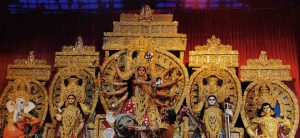
Pandals – big and small
We exited the pandal through a side entrance, and the lane we landed in was also lined with plenty of stalls, including a Hershey’s stall, but all were closed. This lane was also decorated on the top, and as usual, there were plenty of banners around. We guessed that the set-up was such that all the streets leading to the main pandal were decorated with archways – so if you stepped into an archway, you knew it would lead you to a pandal.
There were smaller pandals in some side lanes as well, but these lanes had very little decoration than those leading to the main ones. We did step into a few of these smaller pandals – seemed like they were constructed by smaller housing associations in the neighbourhood. There were no crowds here, and you could even sit inside if you wanted to.
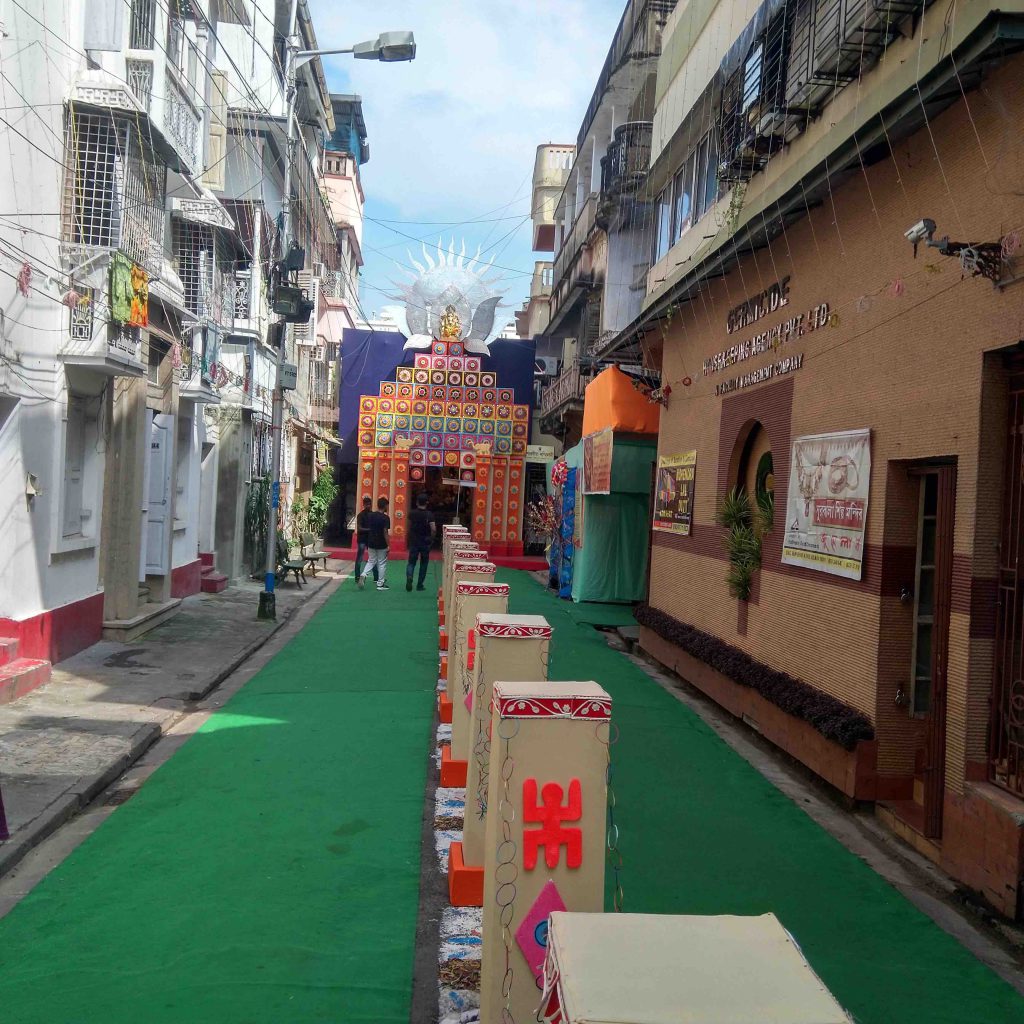
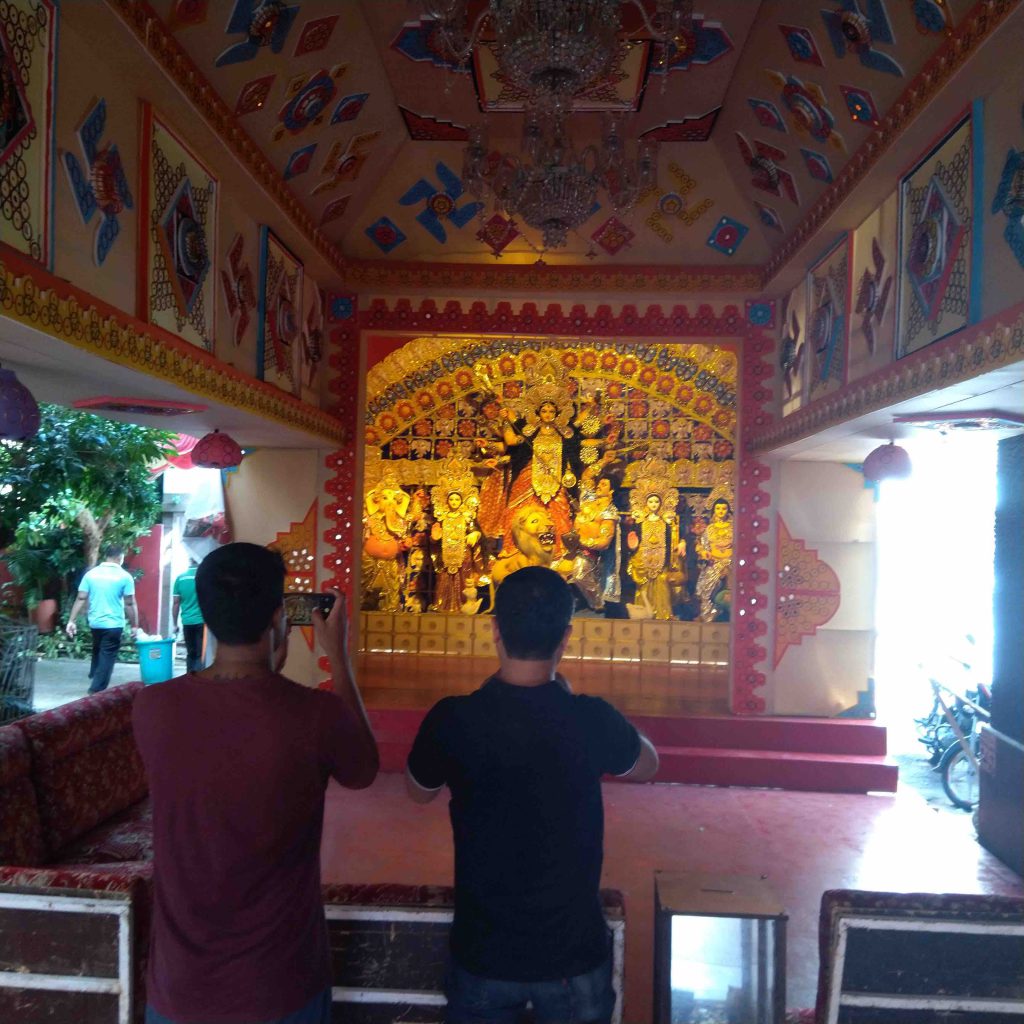
By 10 am, we exited the Ekdalia neighbourhood. We noticed some overhead decoration on the opposite side of the road and followed the decorated lane. Should lead us to a pandal was our guess. And it did – we landed in the Singhi Park Sarbojanin pandal, also a destination in Deb’s itinerary. This one had wooden sculptures for the Gods; the demon here was in agony under the foot of the goddess, and the lion sporting a ferocious look – it surely knew that it was close to vanquishing the demon.
Exiting the pandal, we landed on the Hindustan Road, which also had the overhead decoration, and we followed along to reach the Hindustan Club pandal – the last pandal on Deb’s list before lunch. The entrance to this pandal was unique – hundreds of painted inverted pots arranged in the shape of a large mushroom. It was very thoughtful of the organizers to have kept a fan at the entrance of the pandal, providing much needed relief on a bright sunny day.
The goddess Durga here was a picture of calmness sporting a faint smile; unlike the other pandals we had seen so far, the other 4 Gods here were much smaller. Durga was seated on a lion, and the lion itself was pretty much trampling a buffalo that was flat on the floor. Wondering why a buffalo? It’s because the demon was Mahishasura (a buffalo demon; asura is the word used for demons, and mahisha in Sanskrit means buffalo).
Aaron took many shots of the mushroom from various angles and distances with different camera settings.
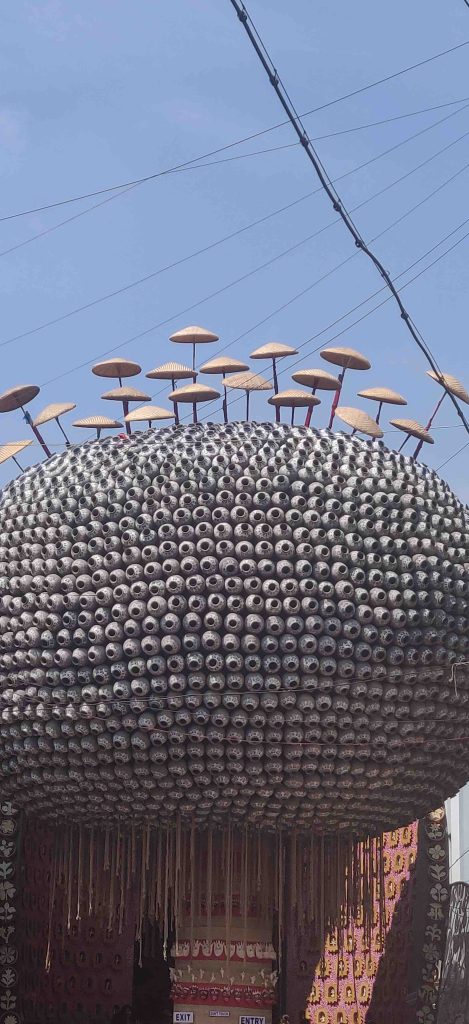
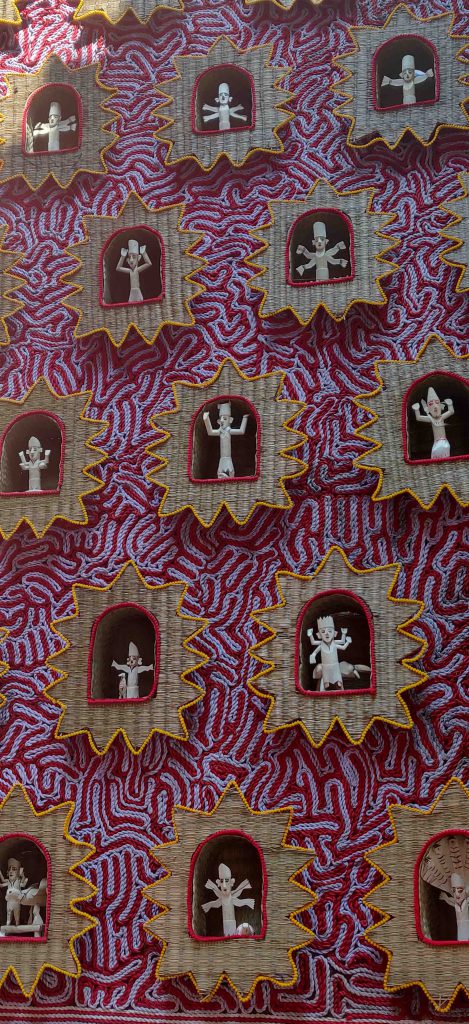
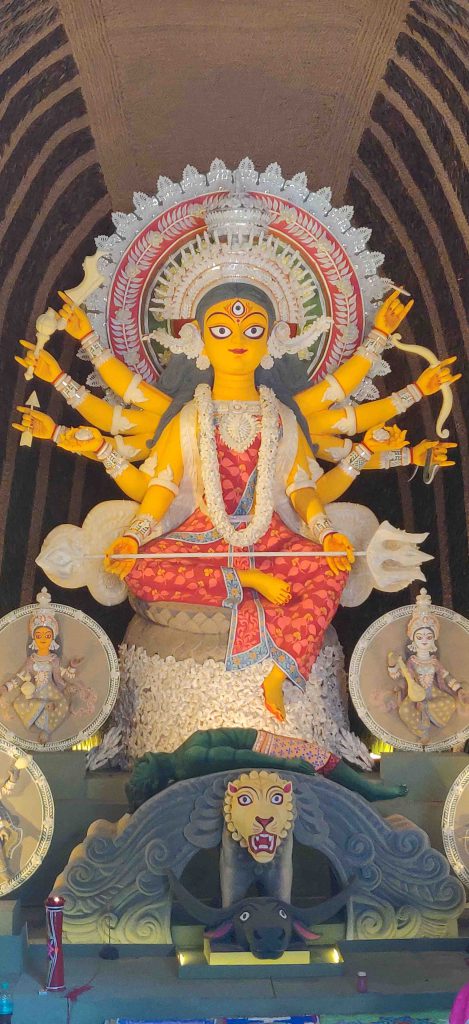
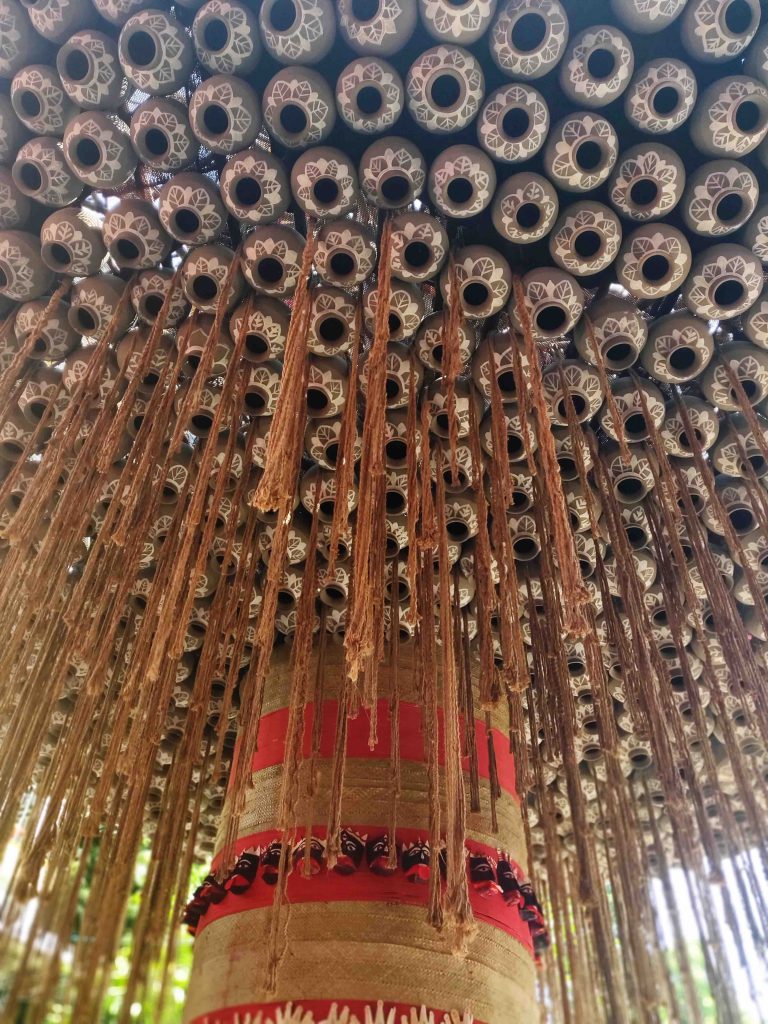
We exited the pandal and headed further down Hindustan road; we noticed a poor couple sleeping on the footpath while their kid was playing near them, running around the parked vehicles. A little further down the lane was another couple huddled together on the footpath in front of a coal-fired stove boiling potatoes. Quite a contrast, considering the fact that just a few meters away was a large pandal which must have cost a lot to build.
